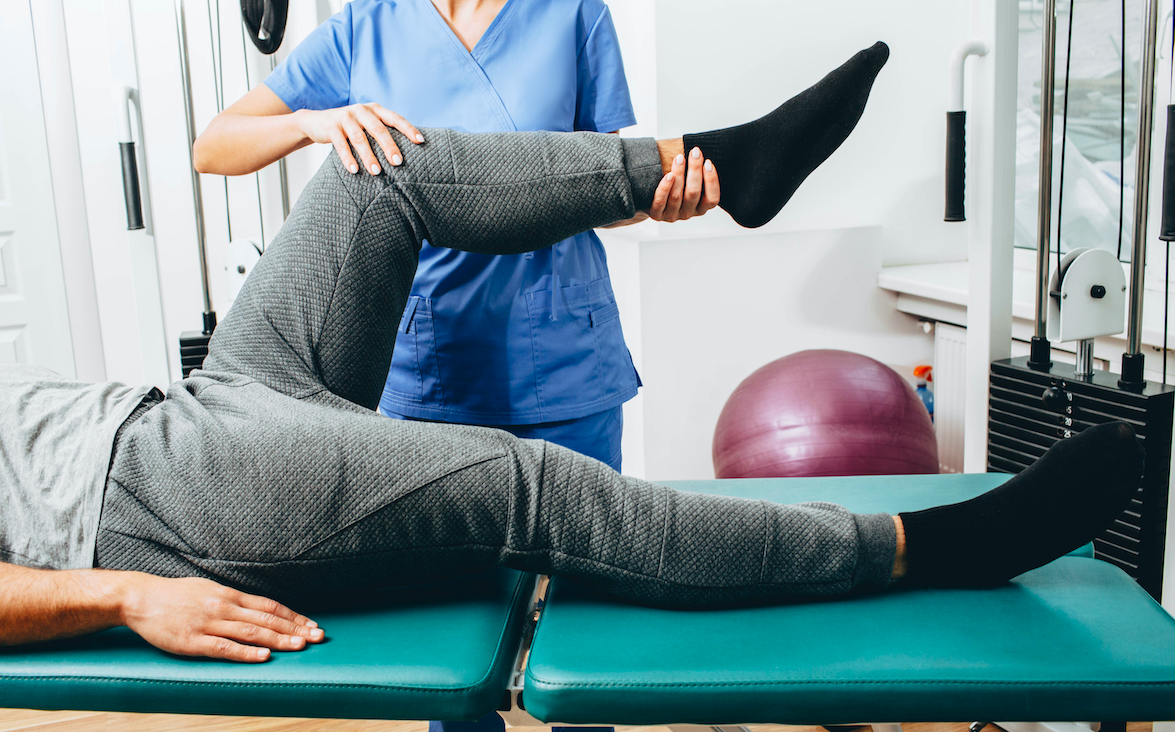
In our first post, we discussed three of the most common conditions that occur in the lower leg and answered some frequently asked questions about these issues. Next, we walked you through three key exercises that you can perform on your own to alleviate pain related to several common lower leg conditions. As we pointed out, regularly performing stretching and strengthening exercises can lead to notable gains for many patients, but there are limits to these benefits.
For pain and functional limitations related to shin splints, Achilles tendinitis, or plantar fasciitis that persists after you’ve tried to correct it independently, additional care from a trained professional is needed. The clearest answer to this call is physical therapy. Physical therapists are movement experts who help patients overcome their impairments with a multifaceted treatment approach, and they are your best option available for each of these common lower extremity conditions.
Research has shown that many of the interventions frequently utilized by physical therapists are effective for addressing these disorders and are featured in the relevant treatment guidelines as a result. For example, the clinical practice guidelines for plantar fasciitis assign an “A” grade to stretching, manual therapy, taping, and foot orthoses, which are some of the most commonly used physical therapy interventions for this condition. An “A” grade means that there is “strong evidence” to support the recommendation for these therapies. Another study found that patients with plantar fasciitis who received manual—hands-on—therapy from a physical therapist averaged fewer visits and lower costs than those who did not.
Similarly, the clinical practice guidelines for Achilles tendinopathy—an umbrella term that includes Achilles tendinitis and tendinosis—assign an “A” grade to exercise, a “B” grade to activity modification, and a “C” grade to stretching exercises. Other research has also found exercise to be the primary treatment strategy for Achilles tendinopathy, particularly eccentric exercise, which is the gold standard for this condition (and will be discussed later).
An overview of physical therapy for shin splints, Achilles tendinitis, and plantar fasciitis
While there are certain interventions consistently used for these conditions, each physical therapy treatment program will be unique based not only on the specific disorder, but the patient’s needs, abilities, and goals as well. Below is a brief summary of the treatments most commonly utilized to address each of these conditions:
Shin splints
- Strengthening exercises: one way to decrease stress on the lower leg is by increasing the strength of the muscles associated with the hip; therefore, hip rotation, hip abduction, and hip extension strengthening exercises are frequently prescribed
- Strengthening exercises can also be performed to increase your arch and shin muscle strength to decrease the overpronation (flattening out) of the arch of the foot
- Stretching exercises: these typically target the calf and foot muscle
- Balance exercises: the single-leg stance progression exercise, as well as squats and heel raises can all help to improve balance
- Footwear education: your therapist may provide suggestions for your footwear to ensure that your feet are fully supported when walking and exercising
- Shoe orthotics or inserts: your therapist may prescribe these if your feet flatten out too much or if your foot muscles are weak to better support the arch of your foot
Achilles tendinitis
- Eccentric calf-strengthening exercises: these exercises lengthen a muscle at the same time it’s being contracted and are strongly recommended for Achilles tendinitis; the best example is the heel drop
- Heel drop: stand on the edge of a stair or stable platform—with one or both feet—and hold on to a rail to keep your balance; lift your heels off the ground, then slowly lower them to the lowest point possible in a controlled fashion; repeat this step 20 times; weights can be added
- Manual therapy: these hands-on techniques administered by a physical therapist include massage, manipulation, and mobilization, which improve mobility and function, and alleviate symptoms
- Stretching exercises: the physical therapist will usually guide you on how to stretch tight muscles in order to improve flexibility and range of motion; patients, in turn, can perform these exercises on their own at home
- Pain-relieving modalities: ice, heat, uasound, and other passive interventions may also be used to reduce pain and inflammation
Plantar fasciitis
- Stretching and strengthening exercises: the primary muscles targeted are those of the calves, ankle, and foot, including the plantar fascia
- Foot taping and/or a night splint: these techniques provide support for the arch of the foot
- Footwear education: as with Achilles tendinitis, your footwear selection can affect the progression of plantar fasciitis, and your therapist can guide you on how to select the right pair of shoes that reduce stress to the plantar fascia
- Pain-relieving modalities: heat, uasound, and icing the bottom of the foot can all lead to immediate pain relief
- Manual therapy: massage and manual techniques can release muscle tension in the foot and surrounding area and reduce pain
With a clear set of benefits and a treatment approach that will be unique to your condition, physical therapy is the fastest and safest way to a complete recovery. So if you’re bothered by any lingering pain in your lower leg, contact a physical therapist to get started on your rehabilitation right away.
